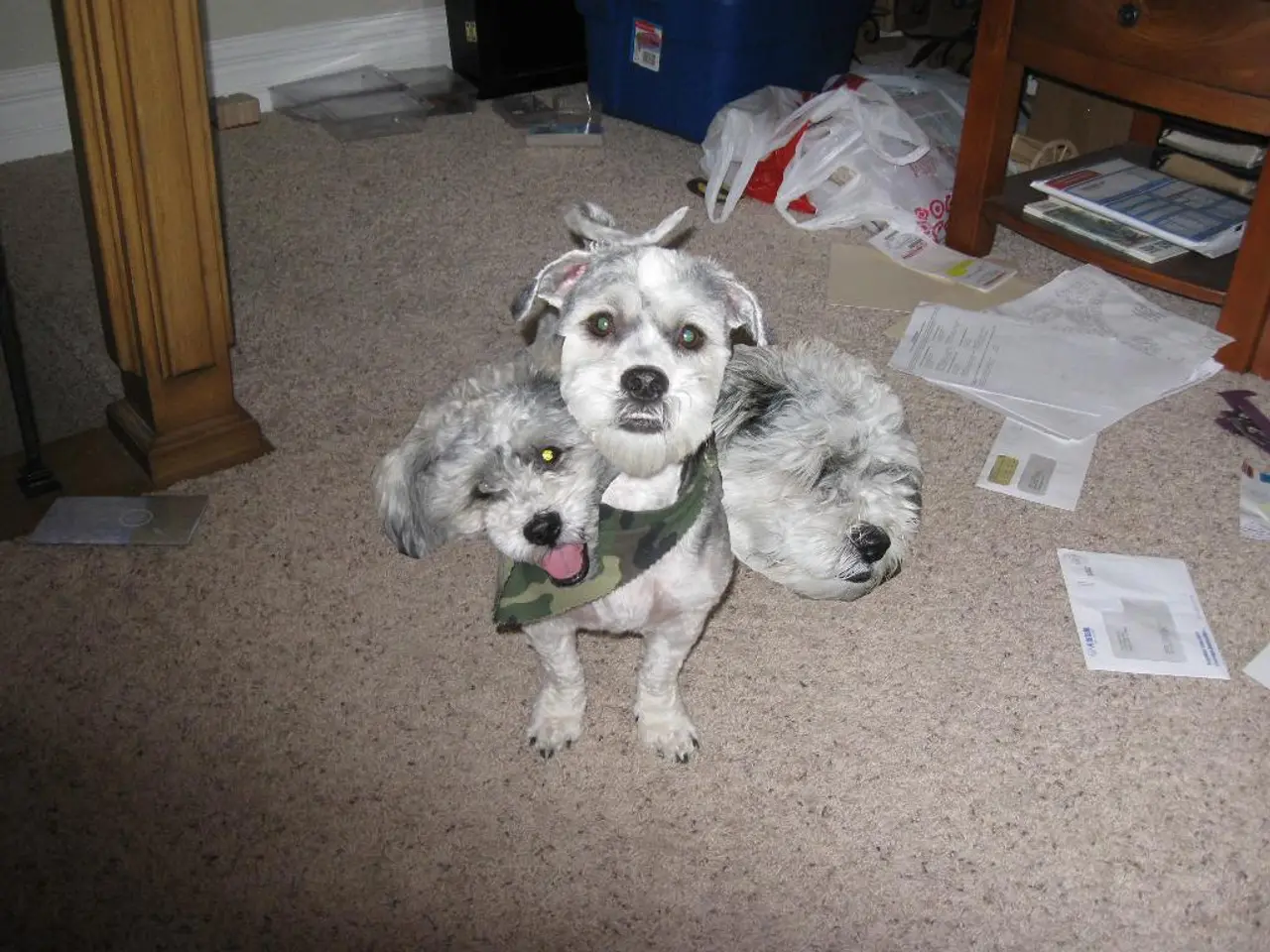Breeds of Dogs, All Sporting Floppy Ears
Dogs with floppy ears are charming and lovable, but their unique ear shape requires special care to maintain good ear health. Here are some popular dog breeds with floppy ears and tips for keeping them healthy.
Popular Floppy-Eared Dog Breeds
- Irish Setters are a pointing breed with floppy ears and a playful, lovable personality. They make great family dogs, getting along well with children and other dogs.
- The Dachshund is a small breed of dog with floppy, triangular ears that help protect their ear canals from debris while hunting in burrows.
- The Poodle is a breed with curly-coated floppy ears, which are a signature feature of the breed.
- Papillons, also known as phalene, have drooped ears in addition to their butterfly-like ears. They are considered one of the smartest dog breeds and are known for being cute.
- Beagles are known for their pendulous ears, an important part of their hunting heritage as they help gather and direct scent particles towards their nose.
- Afghan Hounds have impressively long and silky coats, including floppy ears, requiring regular grooming. They are one of the fastest dog breeds, capable of running at up to 40mph.
- Great Danes have naturally floppy ears, but some may have cropped ears due to breeding practices. They are known for being laid-back and affectionate, making them suitable for family life.
- Cavalier King Charles Spaniels are known for their long, feathered and set low on its head, floppy ears, and were bred for their strong hunting instincts.
- Maltese have long fur that covers their floppy ears, requiring regular grooming to keep their coat and ears in perfect condition.
- Labrador Retrievers have fluffy, floppy ears and are great search and rescue dogs due to their outstanding sense of smell and calm demeanor in emergencies.
- Golden Retrievers have floppy ears that hang downwards, framing their face. Originating as hunting dogs, these large dogs have lots of love and energy to share.
- German Shepherds are born with floppy ears that tend to stand up with age. They have a brilliant sense of smell and are often used as search and rescue dogs or for bomb and drug detection.
- Boxers may have floppy ears or cropped ears due to breeding practices. They are energetic, easy to train, and love spending time with people.
- Cocker Spaniels are characterised by their adorable floppy ears, which act like funnels, trapping and directing smells towards their nose.
- Shih Tzus have long fur that coats their floppy ears, requiring regular grooming to keep them mat-free.
- English Springer Spaniels have floppy ears coated in glorious fur, which help them in hunting and tracking. They are larger and more muscular than cocker spaniels and require plenty of exercise.
- Bloodhounds have large, droopy ears specifically designed to act as scent-sweepers, directing scent particles towards their nose. They have 230 million scent receptors, making them one of the best dogs for tracking, but their large ears can lead to ear infections.
- Havanese are a toy dog breed with floppy ears that remain floppy, even when alert, and don't shed much.
- Basset Hounds are a breed with long, floppy velvety ears, a low-slung body, and powerful short legs.
- Bluetick Coonhounds are scent hounds with a powerful nose, mottled, glossy coat, and unique howls. They have floppy ears that hang way down past their chin to enhance scent tracking ability.
Ear Care for Floppy-Eared Dogs
To maintain ear health in floppy-eared dogs, regular ear cleaning is essential because their ear shape can trap moisture, wax, and dirt, leading to infections and bad odors. Here are key tips for ear care:
- Regular Cleaning: Clean the ears frequently with a vet-recommended ear cleaner to remove wax and debris. Floppy ears often require more frequent attention than erect ears due to reduced airflow.
- Check for Signs of Infection: Look for redness, swelling, foul odor, or excessive scratching, which may indicate infection requiring veterinary attention.
- Keep Ears Dry: After baths or swimming, dry the ears thoroughly to prevent moisture buildup which can promote infections.
- Grooming: Regular grooming, including trimming hair around the ears, helps prevent mats and can improve air circulation.
Floppy ears provide natural protection in outdoor environments but also demand this extra care to avoid infections common in breeds like the Cocker Spaniel and Basset Hound.
Dogs such as Irish Setters, Dachshunds, Poodles, Papillons, Beagles, Afghan Hounds, Great Danes, Cavalier King Charles Spaniels, Maltese, Labrador Retrievers, Golden Retrievers, German Shepherds, Boxers, Cocker Spaniels, Shih Tzus, English Springer Spaniels, Bloodhounds, Havanese, Basset Hounds, Bluetick Coonhounds, and Cocker Spaniels have floppy ears that are part of their unique characteristics and charm. Regular ear cleaning, keeping eyes out for signs of infection, keeping ears dry after baths or swimming, and grooming are essential to maintain good ear health in these breeds. Floppy ears need more attention due to reduced airflow, so they are prone to infections if not properly cared for. Owning a floppy-eared dog requires a lifestyle that includes periodic ear cleaning, a focus on their ear health, and a commitment to grooming to avoid possible infections and associated problems. Incorporating home-and-garden products like ear cleaners and grooming tools into your pet's lifestyle can help keep them healthy and happy.




